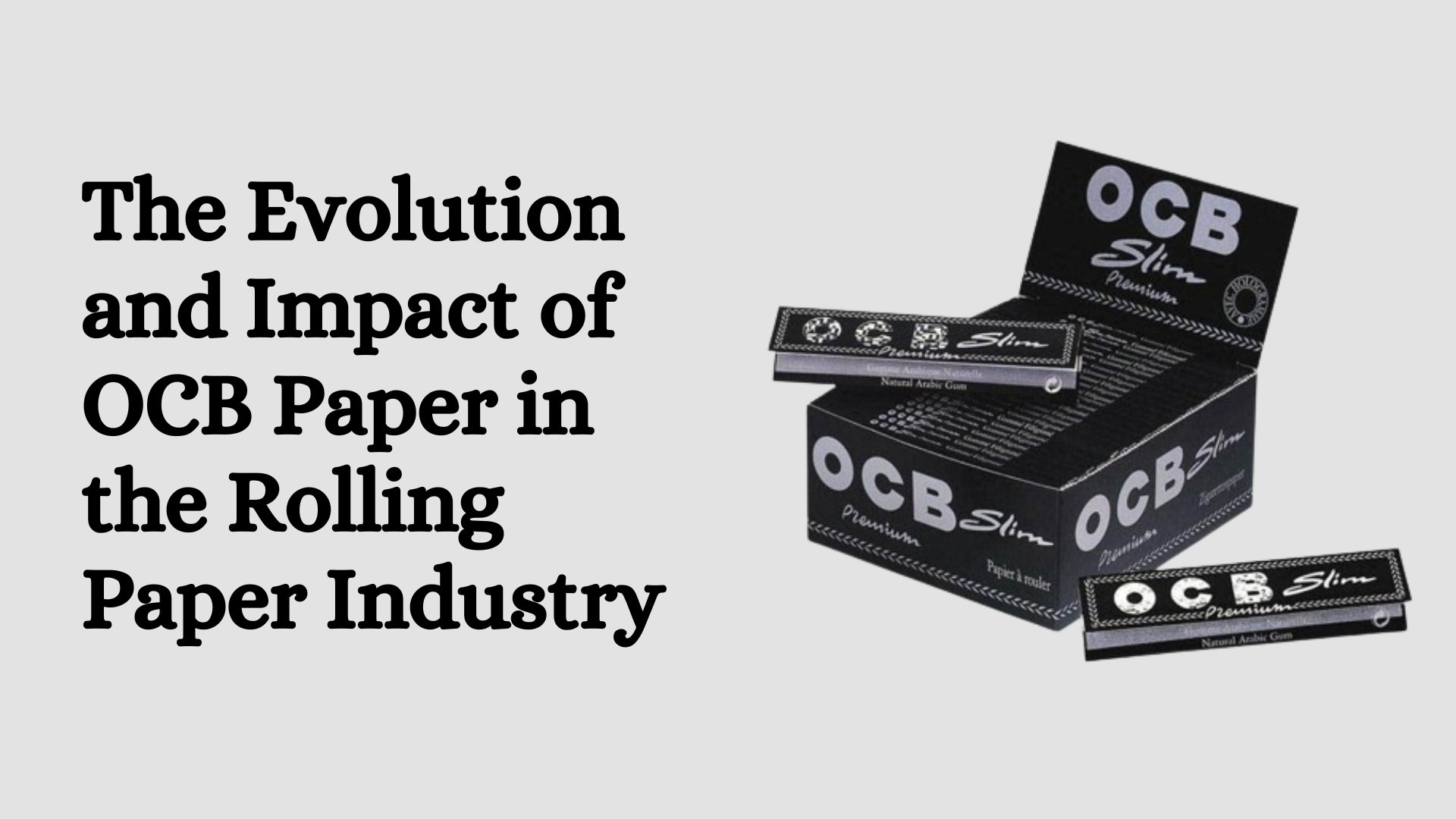Introduction
The rolling paper business recognizes OCB, which stands for Odet-Cascadec-Bolloré, as a leading brand because of its superior papers that are mostly used for rolling cigarettes. OCB, which was founded in France at the beginning of the 1800s, has developed into one of the most reputable brands among those who like rolling paper everywhere. This page explores the kinds, sorts of OCB paper, manufacturing method, and cultural importance of the material.
Historical Background
OCB’s adventure began in 1822, when René Bolloré established a paper mill in Odet, France. Over the years, the Bolloré family extended their activities by combining with other paper mills such as Cascadec, resulting in the development of OCB. By the early twentieth century, OCB had established itself as a top brand in the rolling paper industry.
Manufacturing Process
OCB papers are recognized for their rigorous production process, which provides superior quality and consistency. Here’s a quick summary of the stages involved:
-
Selection of raw materials: OCB papers are created with a range of raw ingredients, including flax, hemp, and wood pulp. The choice of substance influences the paper’s burning rate and flavor.
-
Pulping and Bleaching: The raw materials are converted into pulp, which is subsequently bleached to attain the required whiteness. OCB employs a chlorine-free bleaching technique to ensure that the papers are environmentally safe.
-
Sheet Formation: The pulp is spread out and then pressed into thin sheets. The sheets are then dried and trimmed to the appropriate size.
-
Gumming: A thin line of natural gum is applied to the edge of each paper. This gum is essential for sealing the rolled cigarette.
-
Packaging: The finished papers are carefully packed into booklets, which are then distributed to retailers.
Types of OCB Papers
OCB provides a diverse assortment of rolling papers to suit different tastes. Some of the common kinds are:
-
OCB Premium: OCB Premium, known for its ultra-thin, slow-burning sheets, is popular among skilled rollers. The papers are composed of flax and have no effect on the flavor of the tobacco.
-
OCB Organic Hemp: These papers are manufactured entirely of organic hemp and are unbleached, making them a popular choice for people seeking an environmentally responsible solution.
-
OCB Ultimate: Claimed to be the world’s thinnest rolling papers, OCB Ultimate papers have a nearly translucent appearance and a clean burn.
-
OCB X-Pert: Designed for connoisseurs, OCB X-Pert sheets are somewhat thicker for added stability and ease of rolling.
-
OCB Bamboo: These papers, made from bamboo fibers, are a sustainable option that provide a smooth, consistent burn.
Cultural Significance
OCB publications have played an important role in many subcultures, particularly the smoking community. Their great quality and diversity have made them a popular choice among smokers who want to roll their own cigarettes. Furthermore, OCB has gained popularity in the cannabis community, where rolling papers are frequently discussed and preferred.
In addition to their usage in smoking, OCB papers have made their way into popular culture. They are frequently cited in music, film, and literature, representing a carefree, DIY attitude. The brand’s unique logo and packaging have become iconic, symbolizing a fusion of heritage and innovation.
Environmental Considerations
OCB has made considerable advances in implementing environmentally friendly practices. The usage of chlorine-free bleaching, organic hemp, and bamboo paper demonstrates the brand’s dedication to sustainability. Furthermore, OCB’s packaging is frequently produced from recycled materials, which reduces their environmental impact.
Conclusion
OCB papers have gone a long way since their beginnings in the nineteenth century. its dedication to quality, innovation, and sustainability has cemented its reputation in the rolling paper sector. Whether you are an expert roller or a beginner, OCB has a variety of goods to meet your needs. As the brand evolves, it demonstrates the timeless attraction of high-quality rolling papers.





